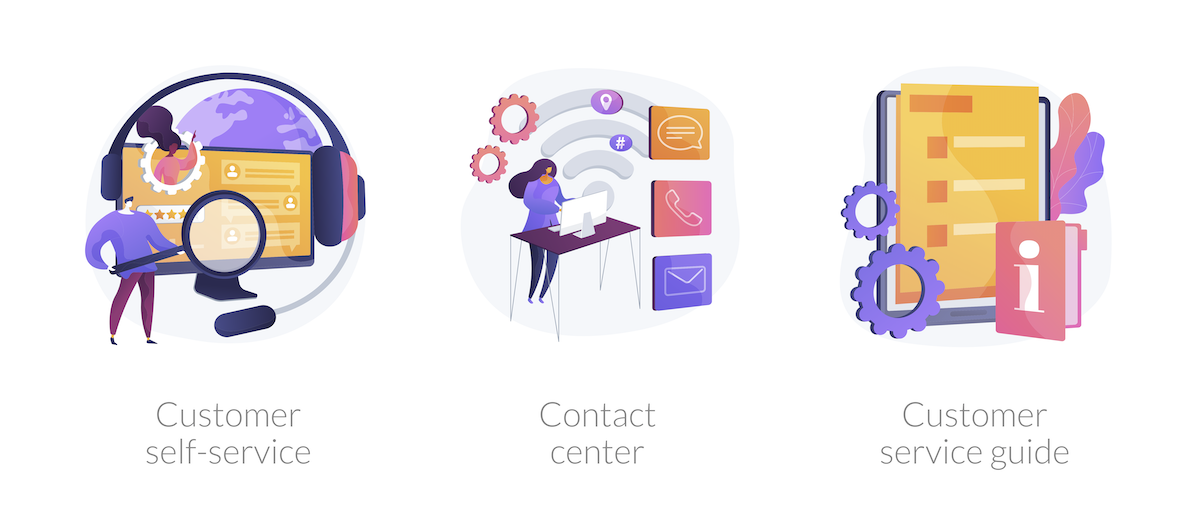Customer service is often ignored in the digital age, but it is more important than ever. Customer expectations are higher today than ever before, and accordingly, customer service must evolve to meet those expectations. In this post, we'll explore some of the latest trends in customer service and highlight why digitization is important for your business.
Customer service is shifting from reactive to proactive. Customers want customer service that not only responds when they have a concern, but proactively anticipates their needs and responds to them before the need arises. As you move into this new era of customer service, it's important for your company to be digital. There are several ways to do this in the future.
Chatbots

Chatbots can also be used in the industry to be more proactive. They can help customers with their needs while saving time and money for businesses by responding to frequent requests. These are already established and used in the consumer environment. The industry, however, is just getting started. One of the benefits is that chatbots allow for more efficiency in customer service. This means that conversations can be resolved more quickly, which is especially important when many customers are in contact with a company at the same time.
One potential challenge with using chatbots is the lack of human interaction when dealing with complex problems or requests. If a problem cannot be solved by a chatbot, the customer may need to talk to someone to get the issue resolved.
Furthermore, there are also concerns with using chatbots in face-to-face relationships, as conversations are often automated with preset responses. This can lead to a less personalized experience for both parties in the conversation.
Finally, one of the biggest challenges is that many chatbots cannot accommodate new circumstances and may not be able to fully understand all requests from customers.
Remote Assist

Remote Assist solutions have been widely used by industrial companies in the past. Mostly for troubleshooting of equipment and machines, but there are other use cases that need to be established now. These solutions can also be used for plant acceptance and optimization. A remote assist solution can be extended with the help of data glasses. The data glasses are equipped with sensors and cameras that transmit the live video feed to a remote expert. The experts can see what is going on in real time and provide instructions or other suggestions. This allows the person on site to work hands-free without having their hands on a smartphone or tablet. Data glasses are generally more complex than other wearables and have more uses because they don't have to be worn all the time like smartwatches or fitness trackers.
For example, one usable pair of data glasses is the RealWear HMT-1. The HMT-1 is one of the most notable data glasses because it is a complete wearable computer.
It can be used in professional environments such as manufacturing or pharmaceuticals, where workers need hands-free access to information without being restricted in their work. Data glasses can be used for remote assistance in a variety of environments.
In areas where time is a factor, data glasses are preferred because they allow both the person at the machine and the remote assistant to see what the condition and status of the machine is - reducing the time spent explaining tasks or correcting errors. In addition, Remote Assist with Data Glasses allows professionals to work from any location, even if they are on the other side of the world.
Artificial intelligence
Artificial intelligence, or AI for short, is the technology behind self-driving cars and chatbots. To many people, this may seem like a futuristic concept, but it is already being used today. A recent study states that by 2020, most companies will have invested in AI technologies to automate processes and increase productivity. With all this progress, however, comes new challenges.
Artificial intelligence comes with both risks and benefits, as does any new technology.
The first risk is that AI can be biased toward certain customers or certain types of people because it doesn't have full human empathy. Another big risk is that there are no regulations on how companies use AI to manage their customer interactions! These risks mean that customer service managers need to be more aware and proactive when implementing an AI system into their business, as these technologies can perpetuate biases if left unattended.
However, new applications for AI are also emerging in various industries, including customer service management. Artificial intelligence can be used for customer service management tasks such as identifying customers with similar needs, prioritizing customer requests, and determining what type of offer or incentive would be best for each customer.
In this way, AI can assist employees by collecting and analyzing data, which helps employees provide a better level of service. For example, an AI-based solution can be used to determine the wear and tear on spare parts in advance, allowing for targeted deliveries of new parts to customers.
The potential applications for artificial intelligence are staggering. In a recent survey, 64% of executives surveyed said they expect AI to have an impact on their industry in the next three years. While many industries will be affected by this new technology and its impact, customer service will likely see one of the earliest impacts as it becomes increasingly difficult to meet customer expectations with human agents alone. Here are some examples of how artificial intelligence can be used in customer service: -Automated answers to FAQs: customers often ask questions that have already been answered multiple times. With the help of AI, these frequently asked questions could automatically generate an answer.
Self Service Portal

A self-service portal can also be a useful solution in an industrial context. If the company's customers are technicians or engineers at remote locations, a self-service portal can be created to provide them with the information they need when they need it. Such portals work best for companies that have standardized processes and procedures, but are proving difficult to establish for special machine builders.
The value of self-service portals is that they can provide information when and where it is needed, without requiring a phone call or email. A customer needing assistance can log into the portal on their own schedule and answer any questions needed to resolve the issue themselves, if possible. Self-service portals are available 24/7 and thus also relieve the burden on customer service staff and can be used to avoid staff shortages. Furthermore, self-service portals also provide a wealth of data and information about customer usage that can help identify problem areas or opportunities to improve services.
We've covered a lot in this post, but the key takeaway is that customer service expectations are higher than ever. To be competitive and successful today, companies must provide excellent customer service across all channels - both digital and physical. Which trend makes sense for your business? Let's discuss how you can implement it so you're ready for whatever comes next in the world of customer service!